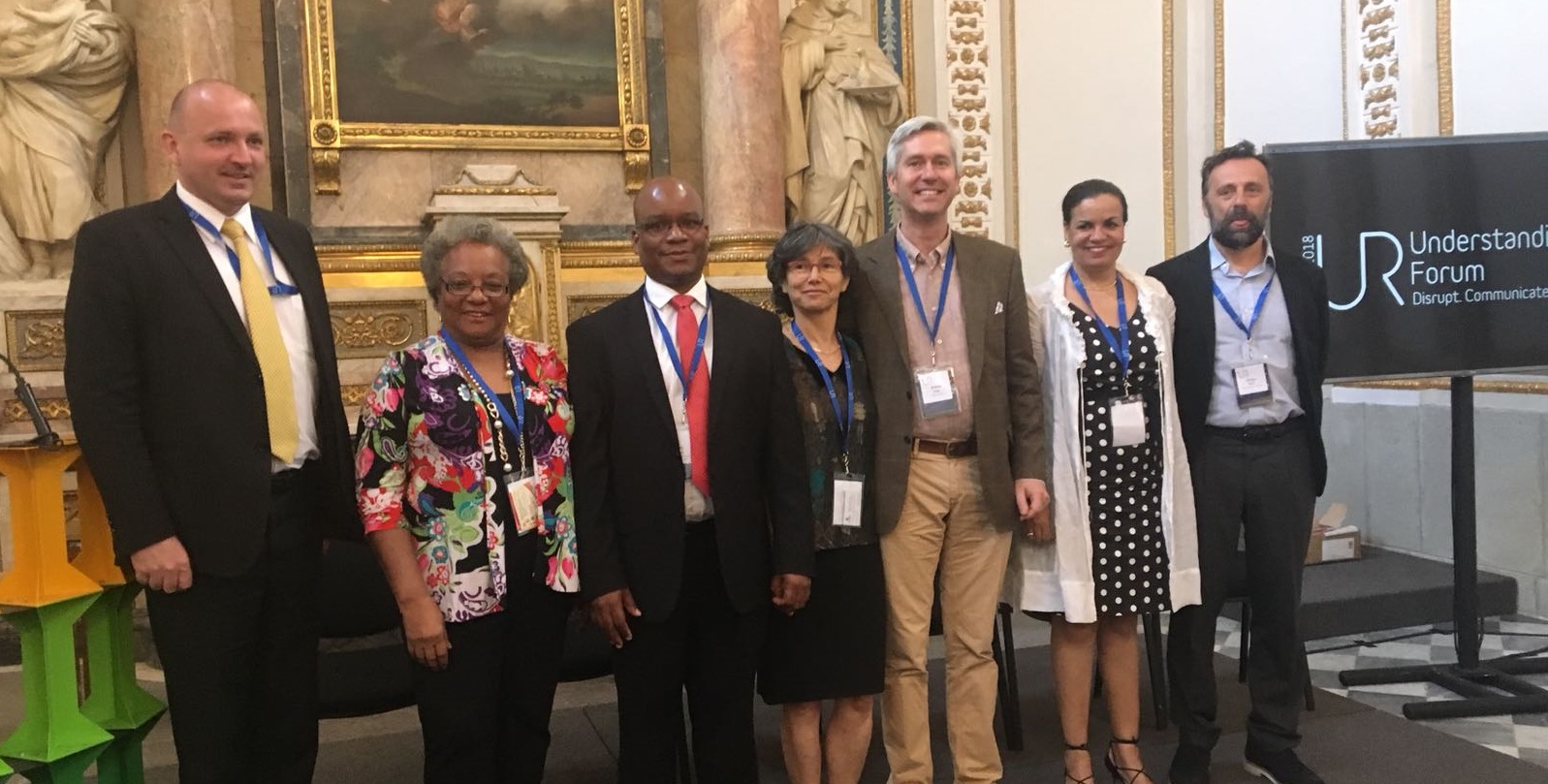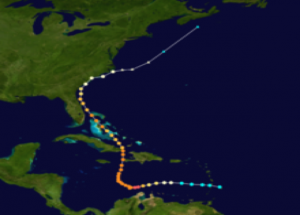On a global basis, disasters strike regularly, in both developed and developing countries. Occasionally however, disasters take on catastrophic proportions, either because of particularly vulnerable populations, a dramatic natural event, or exceptionally unfortunate circumstances. Hurricane Katrina, the Haiti Earthquake, Typhoon Haiyan or the Great East Japan tsunami are examples of catastrophes that hold a special place in our collective memories as mega-disasters from which populations and governments take years to recover and rebuild. Since 2014, the Committee on Earth Observation Satellites (CEOS) has been working on means to increase the contribution of satellite data to recovery from such major events. Hurricane Matthew, on a national scale in Haiti, is one such disaster.
Hurricane Matthew struck southwest Haiti as a Category 4 storm on 2016 October 4th, the first Category 4 hurricane to strike Haiti since Hurricane Cleo in 1964. With upwards of 1,300 lives lost across the Caribbean, and more than a 1,000 lives lost in Haiti, the storm is the deadliest hurricane to strike in the Caribbean since Jeanne in 2004. The impact of Matthew has been lasting. While flooding caused significant damage and loss of life, the wind in some regions destroyed more than 95% of buildings and has completely devastated forests and agriculture. Close to two years after the event, many houses are repaired but not rebuilt, and while the forest is regenerating, the impact will be felt for years to come. In addition, it is worth noting that the area most affected has the largest concentration of natural protected areas in Haiti, requiring on-going monitoring for rehabilitation over the coming years.In December 2016, the CEOS Executive officially triggered the Recovery Observatory for the monitoring of recovery and rehabilitation in the areas of southwest Haiti affected by Matthew. A new Steering Committee made up of CEOS agencies, national partners including CNIGS, CIAT and ONEV, as well as international DRM stakeholders, was established to oversee this project.
Haiti RO for Hurricane Matthew Recovery
The CEOS RO partners, together with the World Bank/GFDRR, the United Nations Development Programme, and the European Union are considering how to take the lessons learned from the Haiti RO and apply them to a generic RO concept that could be activated on a regular basis after catastrophic events. In summer 2018, the Generic RO ad hoc Development Team was established to develop possible scenarios for such a generic, scalable, and replicable Observatory. They are currently developing a White Paper to examine lessons learned through the application of satellite data to recovery challenges.

RO delegation presenting the concept and organisation in Haiti (WB, DPC Haïti, CNIGS Haïti, CNES, CNES/Athena Global, UNDP, CIMA/ASI)
